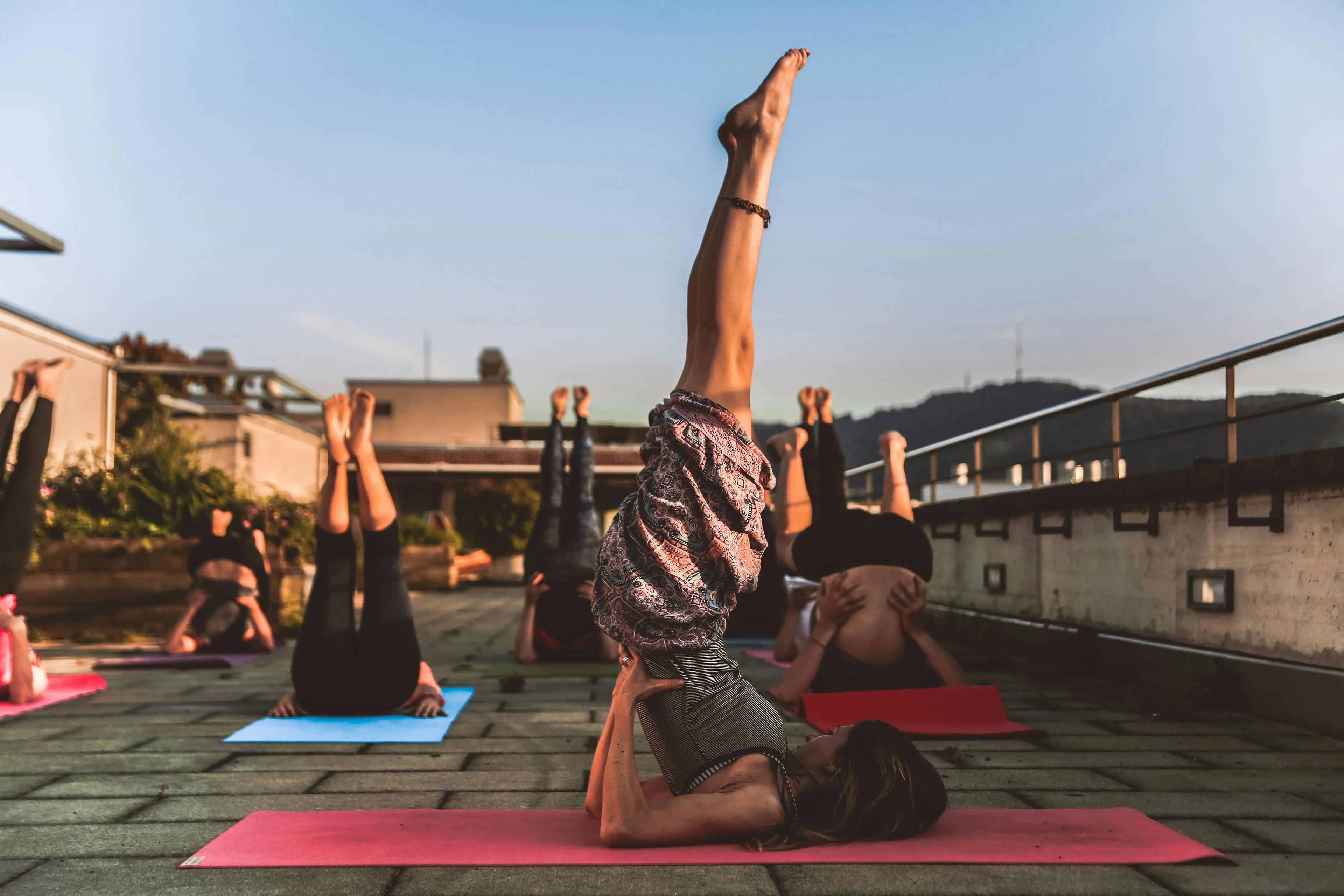How to Choose the Perfect Yoga Mat: Thickness, Material, and Brand Comparison

Choosing the right yoga mat is essential for comfort, stability, and injury prevention. Whether you're a beginner or an experienced yogi, selecting a mat that suits your practice style and personal needs can enhance your experience. This guide will walk you through everything you need to know about yoga mat thickness, materials, and how to choose the best mat for your practice.
Why Choosing the Right Yoga Mat Matters
Many yogis struggle with common issues such as slipping on their mats, experiencing discomfort due to insufficient cushioning, or dealing with mats that wear out too quickly. Practicing on an ill-suited mat can lead to joint pain, instability, and a lack of focus, ultimately hindering progress. Choosing the right yoga mat can solve these problems and elevate your practice by offering the right balance of support, cushioning, and grip.
Here’s why selecting the right mat is crucial:
-
Enhances Comfort: Proper cushioning protects your knees and wrists, reducing strain during poses that require pressure on the joints.
-
Improves Stability and Balance: A high-quality mat prevents slipping and provides a secure foundation, making it easier to hold challenging poses.
-
Ensures Durability: Investing in a well-made mat means it will maintain its grip and structure over time, withstanding regular use.
-
Supports Your Yoga Style: Different yoga styles require different levels of grip and support. For example, hot yoga demands superior non-slip surfaces, while restorative yoga benefits from added cushioning for extra comfort.
Yoga Mat Thickness Guide: Which One is Right for You?
Yoga mats come in various thickness levels, each designed for different preferences and needs. The most commonly available thicknesses are:
-
1mm-3mm (Travel Yoga Mats): Ultra-thin mats are best for portability and outdoor practice but provide minimal cushioning.
-
4mm-6mm (Standard Yoga Mats): The most popular choice, offering a balance of comfort, stability, and durability.
-
8mm and Above (Extra Thick Yoga Mats): Ideal for those with joint issues or those needing extra support, but may reduce stability for balance poses.
Since Sportive Lives Yoga Mat Lotus is 6mm thick, it falls into the standard category—offering excellent cushioning while maintaining a stable base for balance-intensive poses. This makes it a versatile choice for various yoga styles.

Understanding Yoga Mat Materials: Which One Should You Choose?
Yoga mats are made from a variety of materials, each offering different benefits. Here’s a breakdown:
1. Natural Rubber
-
Pros: Eco-friendly, excellent grip, durable.
-
Cons: Heavier than other materials, may have a natural latex smell.
-
Best For: Those looking for an environmentally friendly option with strong grip and durability.
2. TPE (Thermoplastic Elastomer)
-
Pros: Lightweight, recyclable, non-toxic, good grip.
-
Cons: Less durable than rubber, may wear out faster over time.
-
Best For: Beginners or those looking for a budget-friendly, lightweight option.
3. PVC (Polyvinyl Chloride)
-
Pros: Affordable, long-lasting, provides good cushioning.
-
Cons: Not biodegradable, contains chemicals that may not be ideal for eco-conscious yogis.
-
Best For: Budget-conscious users who need durability and comfort.
4. PU (Polyurethane) + Rubber Hybrid
-
Pros: Superior non-slip surface, absorbs sweat, excellent durability.
-
Cons: Heavier, premium price range.
-
Best For: Hot yoga practitioners or those who need maximum grip and moisture absorption.
Sportive Lives Yoga Mat Lotus is made of high-quality TPE, balancing lightweight design, excellent cushioning, and eco-friendliness. For environmentally conscious yogis, natural rubber is another great option as it is biodegradable and offers superior grip. If sustainability is your priority, choosing a TPE or natural rubber mat ensures a low environmental impact while maintaining performance. Check it out here.
Choosing a Yoga Mat Based on Your Practice Style
Different yoga styles require different types of mats. Here’s a quick guide:
-
Vinyasa/Power Yoga: Requires strong grip and durability → PU + Rubber Mats.
-
Hot Yoga: Needs sweat absorption and non-slip surface → PU or Textured Rubber Mats.
-
Restorative/Yin Yoga: Prioritizes comfort and cushioning → TPE or Extra Thick Mats.
-
General Yoga/Home Practice: A well-balanced option with grip and support → 6mm TPE or Rubber Mats.
Yoga Mat Brand Recommendations
1. Liforme Yoga Mat (PU + Rubber, superior grip)
📌 Premium mat with a built-in alignment guide, great for professional yogis.
2. Manduka Pro Yoga Mat (PVC, extra durability)
📌 A heavy-duty mat with extreme durability and high-density cushioning.
3. Lululemon Reversible Mat (Rubber + PU, stylish and functional)
📌 Provides a soft texture with a sweat-absorbing surface, ideal for hot yoga.
4. Sportive Lives Yoga Mat Lotus (6mm TPE, eco-friendly, durable)
📌 Perfect for all levels, lightweight, and provides excellent cushioning.
How to Properly Care for Your Yoga Mat
To ensure longevity, follow these care tips:
-
Clean regularly: Wipe with a mild, natural cleanser or a vinegar-water solution.
-
Avoid direct sunlight: Overexposure can cause the mat to dry out and lose its grip.
-
Store properly: Roll it loosely and store it in a cool, dry place.
-
Use a yoga towel: For extra sweat absorption during high-intensity sessions.

Conclusion – Finding Your Perfect Yoga Mat
Choosing the right yoga mat depends on several factors, including thickness, material, and practice style. If you're looking for a high-quality, well-cushioned, and eco-friendly mat, Sportive Lives Yoga Mat Lotus offers an excellent 6mm TPE design that balances comfort and stability.
For those seeking premium alternatives, brands like Liforme, Manduka, and Lululemon offer excellent options tailored to specific needs.
No matter your preference, investing in the right yoga mat can enhance your practice, prevent injuries, and improve your overall experience. Find the best yoga mat that fits your needs and enjoy a more fulfilling yoga journey! 🧘♀️✨



Leave a comment
All comments are moderated before being published.